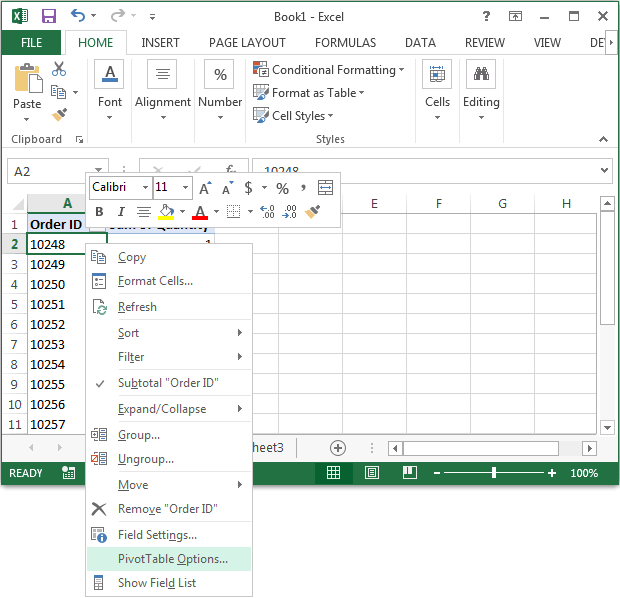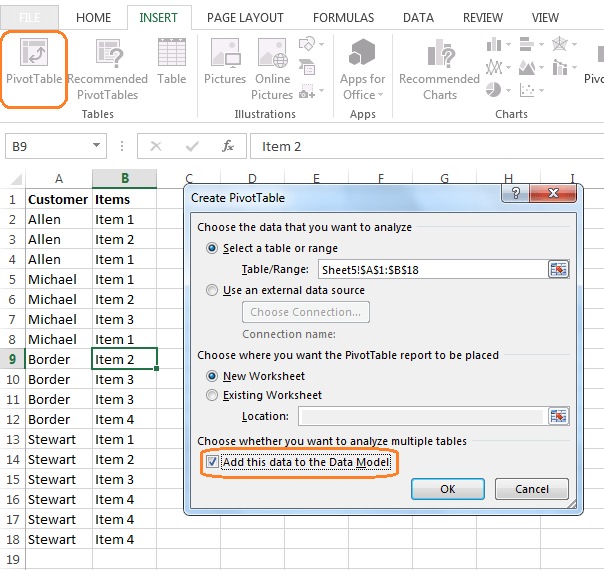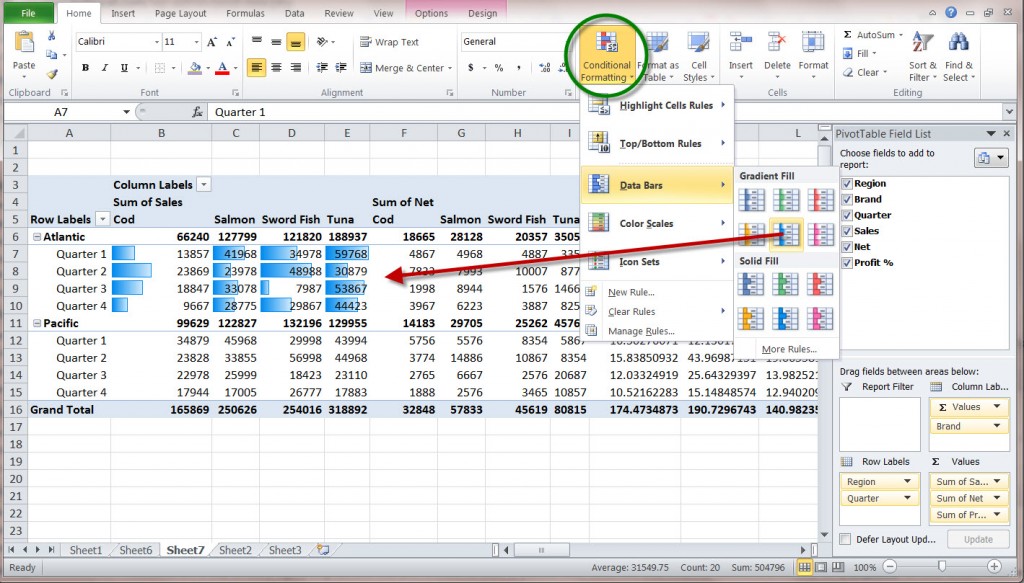

Here's how you do it.Ĭonditional Formatting for Pivot Table | Conditional formatting in pivot tables is the same as the conditional formatting on normal data. Or you can right click on the pivot table.
#Excel 2013 create pivot table options how to#
How to Refresh Pivot Charts | To refresh a pivot table we have a simple button of refresh pivot table in the ribbon. A dynamic pivot table will reduce work of data maintenance and it will consider all newly added data as the source data. How to use the Dynamic Pivot Table in Excel | To create a dynamic pivot table we use named ranges and tables in excel. In this article we will learn all about pivot tables in detail. If you have any doubt regarding this article or have any other questions related to Excel/VBA, let me know in the comments section below.Įxcel Pivot Tables | Pivot tables are one of the most powerful tools and one who knows all the features of pivot tables can increase his productivity exponentially. So yeah, this is how you can access field settings and value field settings in Excel Pivot Tables. Choose to show items with no data or not. Choose to insert a blank line after each item label or not. You can choose to show items in tabular format or not, choose to repeat item labels or not. Similar to the value field settings, you can click on the little arrow head on the rows, or columns section to open the field settings.Īnother way to access the field settings is the pivot table analysis tab of ribbon, same as the value field settings.įrom field settings to pivot tables, you modify the subtotals of the pivot table, change the layout and print settings. Field settings can be accessed by right clicking on any row, column heading or subheading.Īnother way is the dropping area of fields. Here you can choose to show value as a percentage of total or difference between two columns, rank etc.įield Settings allows you to modify the structure of the table. You can see one more tab here that is "Show Value As".

You can also change the name of the field here. So we change the summarized value fields by to Average. For our example, we needed the average of sales done by each region. Now that you have accessed the value field settings, you can modify the field using the available options. Just make sure that you have a value field selected. It is the second option in the Pivot Table Analyze menu. You can also use the Pivot Table Analyze menu from Ribbon to access value field settings. As the last option, you will see Value Fields Settings. Click on it and a dialog box will appear.Īnother way to access value field settings is the area where we drop fields for the pivot table. At the end of the list (most 3rd from last) you will see value field settings. To access Value Field Settings, right click on any value field in the pivot table. For that I will need to access the value field settings. But instead of total sales, I want to get the average sales.

It shows the total sales done by each region. The table shows the summary of data I have. In this article, I will tell you how you can access value field settings and field settings.

You may not want the sum but average, or min, or max, etc… In that case you would need to access pivot value field settings. By default, Excel Pivot table shows sum of numbers if you drag a number column to the value field. But sometimes the values and fields pivot table created by default is not really required. It allows you to quickly summarize a large chunk of organized data. Pivot table is one of the most powerful tools of Excel.


 0 kommentar(er)
0 kommentar(er)
